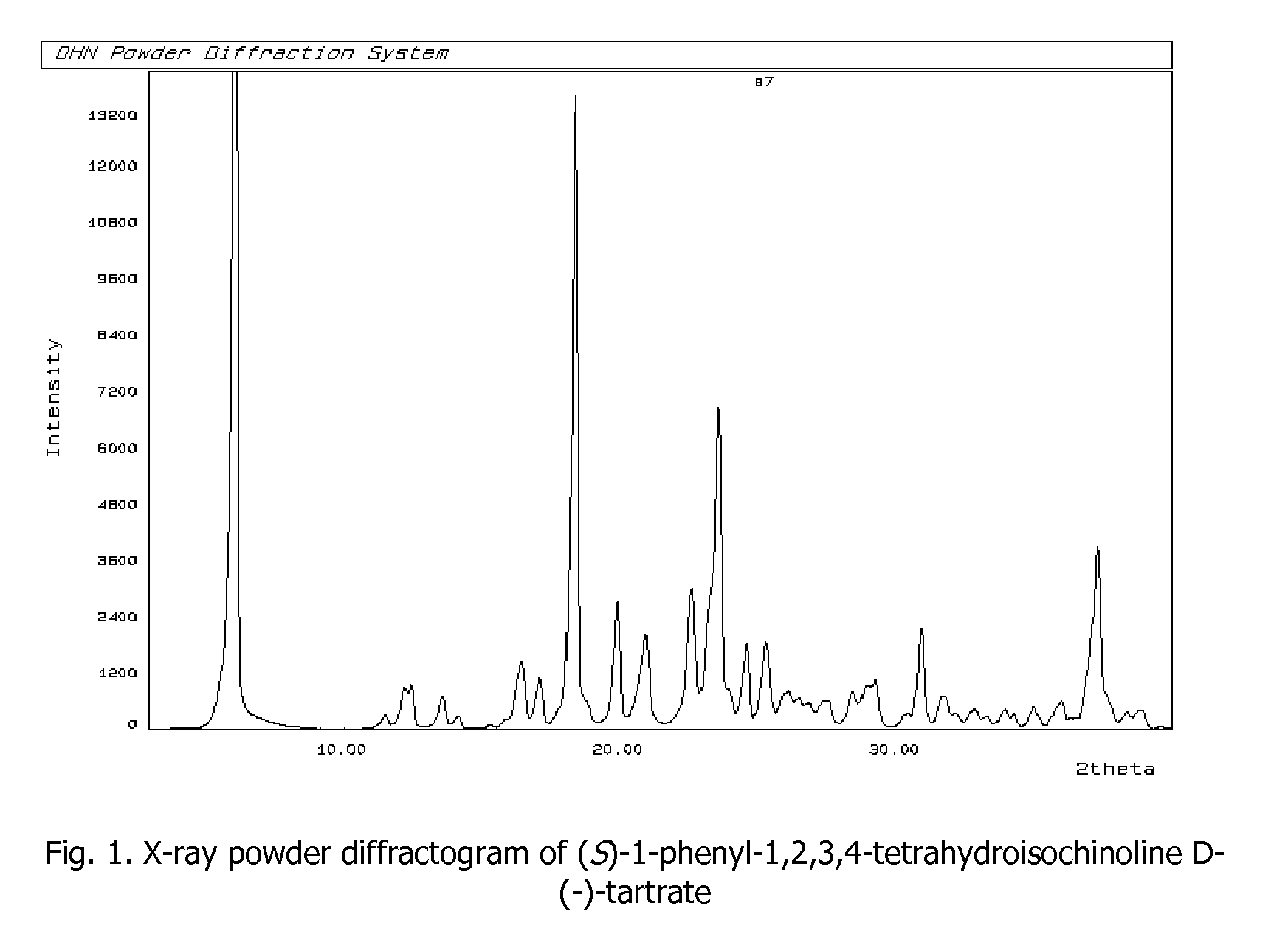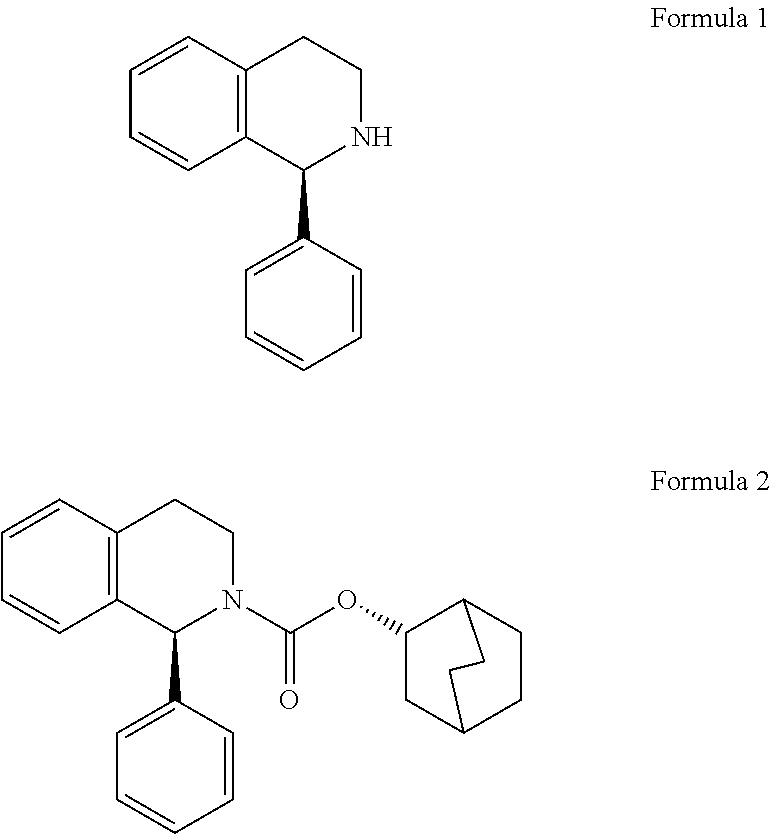Process for preparation of enantiomerically pure (s)-1-phenyi-1,2,3,4- tetrahydroisoquinoline
- Summary
- Abstract
- Description
- Claims
- Application Information
AI Technical Summary
Benefits of technology
Problems solved by technology
Method used
Image
Examples
Example
Example 1
[0034]Racemic mixture of 1-phenyl-1,2,3,4-tetrahydroisoquinoline (40 g, 191 mmol) and D-(−)-tartaric acid (28.61 g, 191 mmol, ee 99%) are suspended in methanol (240 mL). The solution is heated to reflux, until the whole amount of solid is completely dissolved. The heating bath is being removed and to the clear solution water (120 mL) is added; the resulting mixture is left at ambient temperature (24° C.) for 24 h. Crystalline solid is collected as residue by filtering the mixture (21.45 g). T(onset)=186.2° C.; [α]25D=−17.02° (c=1%, H2O). The crystalline solid obtained is suspended in the mixture of 10% NaOHaq (120 mL) and ethyl acetate (50 mL), the solution is stirred at ambient temperature (24° C.) for about 10 min. until the whole amount of solid is dissolved. The reaction mixture is transferred into separatory flask, organic layer is separated and water phase is extracted with ethyl acetate (2×30 mL). Combined organic extracts are washed with water (1×40 mL), dried and c...
Example
Example 2
[0035]Following the procedure described in example 1 the enantiomeric resolution of racemate (1 g) with D-(−)-tartaric acid was carried out, employing different mixtures of solvents and crystallization times. The results are collected in Table below.
Crystal-lizationEnantiomerEnantiomer Temp.time(S)(R)No.Solvent[° C.][h][HPLC, %][HPLC, %]2Methanol24292.37.503Methanol24496.03.84Methanol241667.2032.05Methanol-Water24399.660(10:3, v / v)6Methanol-Water51691.118.70(2:1, v / v)7Methanol-Water249699.80(2:1, v / v)8Methanol-24196.98%2.90%i-PrOH(10:3, v / v)9Methanol-244.591.488.3i-PrOH (2:1, v / v)
Example
Example 3
[0036]Following the procedure described in example 1, the enantiomeric resolution of the racemate (20 g) with D-(−)-tartaric acid in methanol was carried out. After isolation of the I crop of crystals (ee=99.8%), mother liquor was left at 24° C. for 16 h, to yield II crop of crystalline solid (ee=99.25%), after next 16 h at the same temperature III crop (ee=98.4%) was obtained. Crystalline solids collected from the last two crops were combined and recrystallized from methanol—water mixture, resulting crystalline product of enantiomeric excess ee=100% was obtained.
Crystallization(S)-(R)-Temp.timeenantiomerenantiomerNo.Solvent[° C.][h][HPLC, %][HPLC, %]10.IMethanol-242499.800Water(2:1, v / v),I crop10.IIII crop of241697.252.5crystals10.IIIIII crop of241698.41.4crystals
PUM
 Login to View More
Login to View More Abstract
Description
Claims
Application Information
 Login to View More
Login to View More - R&D
- Intellectual Property
- Life Sciences
- Materials
- Tech Scout
- Unparalleled Data Quality
- Higher Quality Content
- 60% Fewer Hallucinations
Browse by: Latest US Patents, China's latest patents, Technical Efficacy Thesaurus, Application Domain, Technology Topic, Popular Technical Reports.
© 2025 PatSnap. All rights reserved.Legal|Privacy policy|Modern Slavery Act Transparency Statement|Sitemap|About US| Contact US: help@patsnap.com



